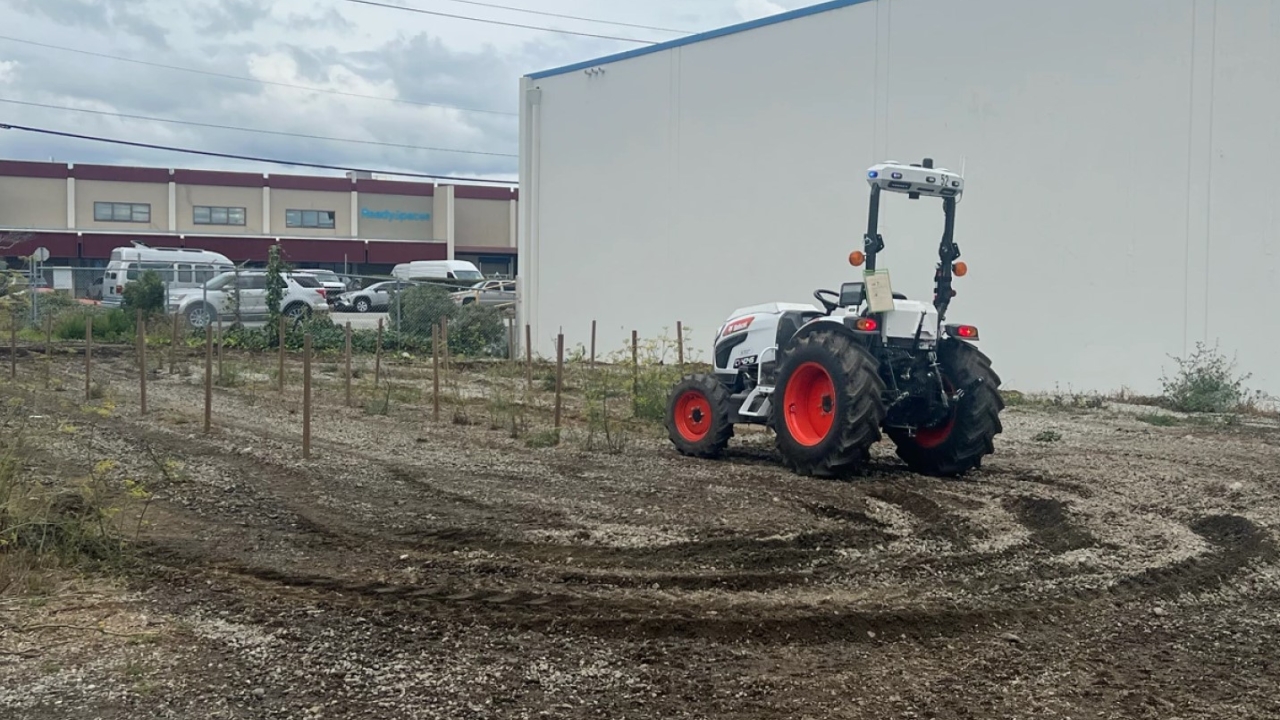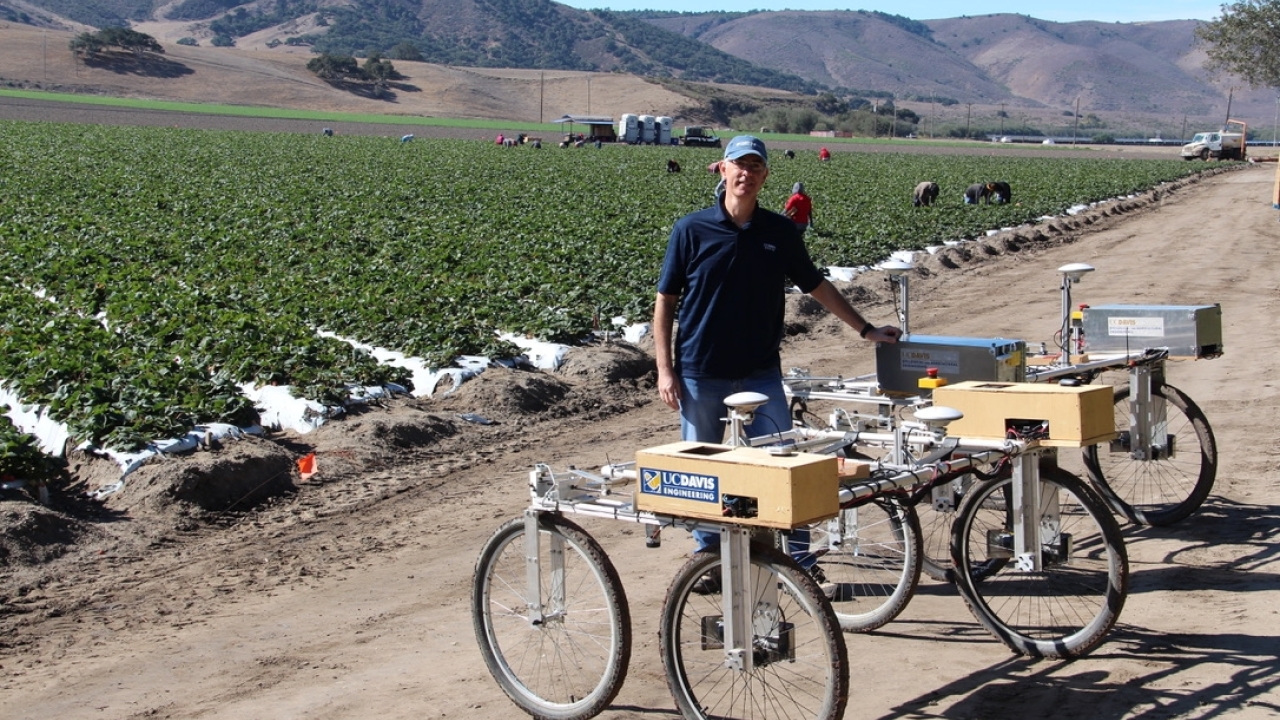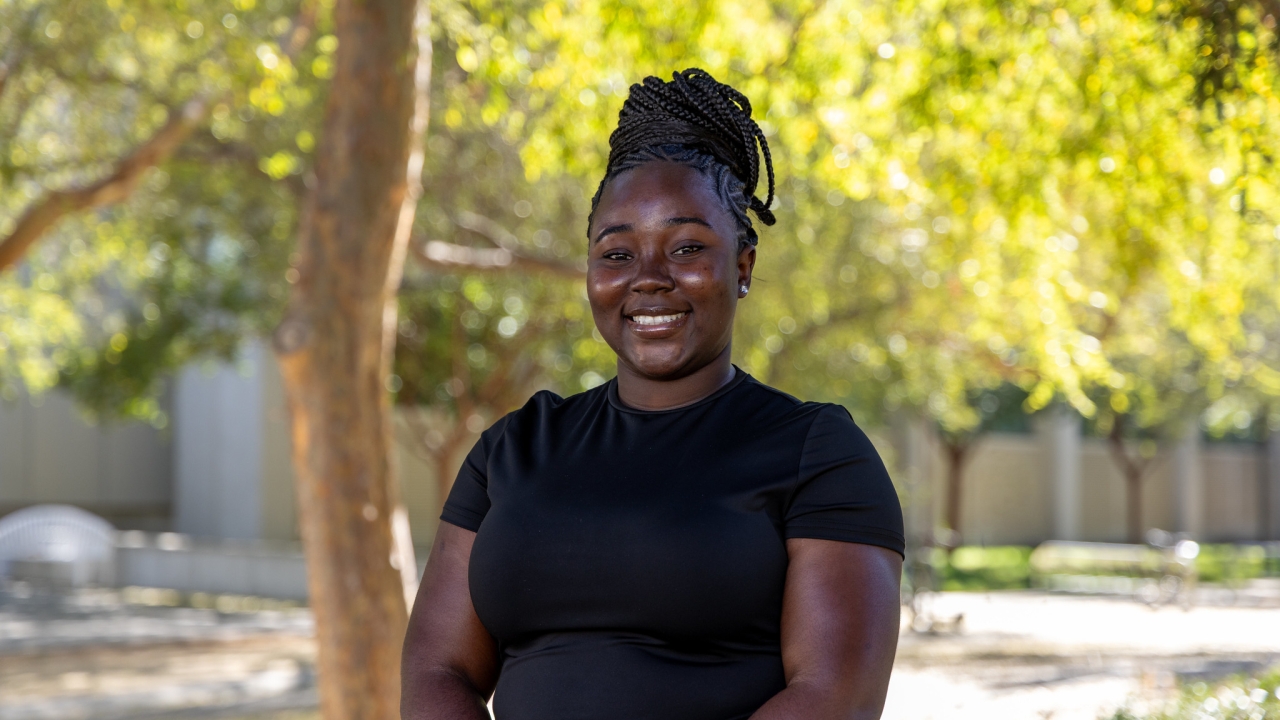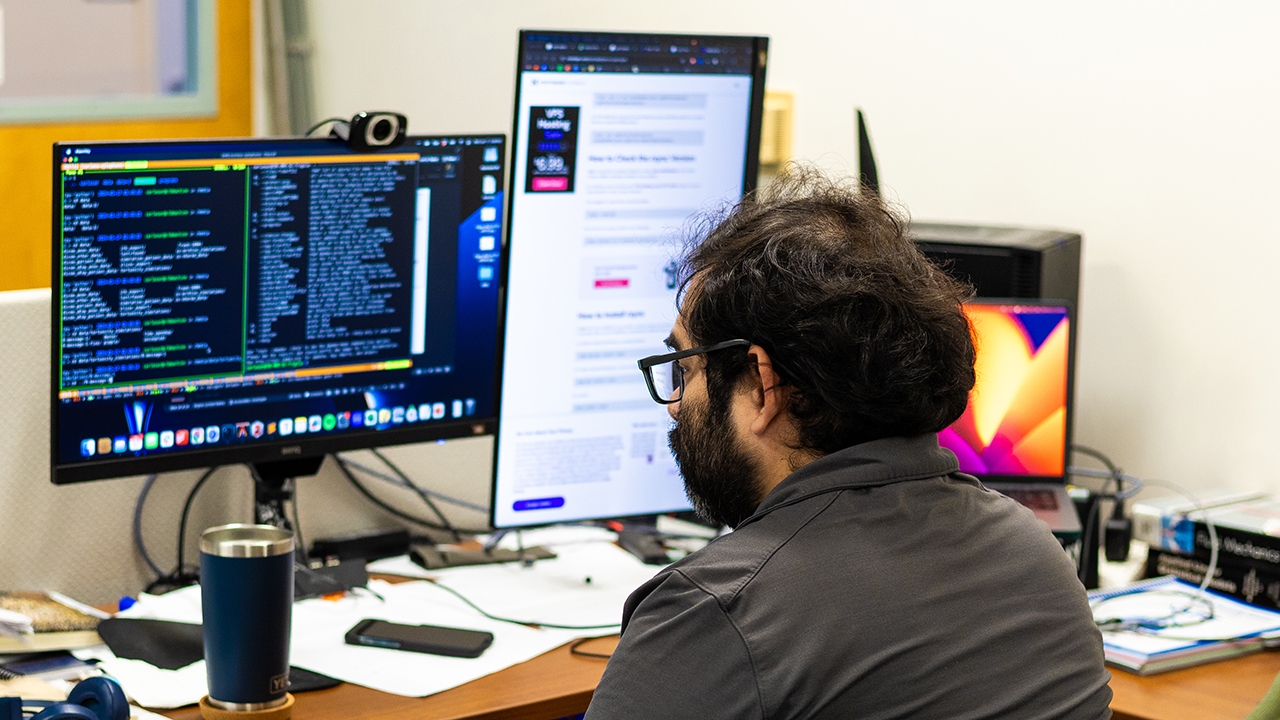
Professor Brings Medical Imaging to Next Level with AI
When Associate Professor of Biomedical Engineering Emilie Roncali was a project scientist in the Cherry Lab at the University of California, Davis, she developed a field-defining simulation model for nuclear medicine, which uses radioactive materials to aid in diagnosing and treating diseases like cancer.
Now, she's working to improve the model with generative AI, thanks to a nearly $2.5 million grant from the National Institute of Biomedical Imaging and Bioengineering, or NIBIB.
Making a Benchmark Model Better
Roncali's LUT Davis Model — LUT, short for lookup table — allows researchers to simulate how light particles interact with nuclear imaging devices like CT and PET scanners through GATE, an open source software for medical imaging simulation. Lookup tables are a method for storing highly used data into an accessible and descriptive catalog, not unlike a dictionary that compiles words and their definitions, and are very useful for data modeling.
GATE simulations created with Roncali's model can show how much radiation is in the body after a medical scan or radiation treatment, for example. After applying complex reconstruction algorithms, it can also generate the medical images machines might produce under different settings and protocols.
These generated images are crucial for optimizing radiation detectors in scanners for specific photons, also known as light particles, thus improving their ability to produce high-quality images of the human body. The higher the quality of the images, the easier it should be to detect abnormal structures in the body, like cancer.
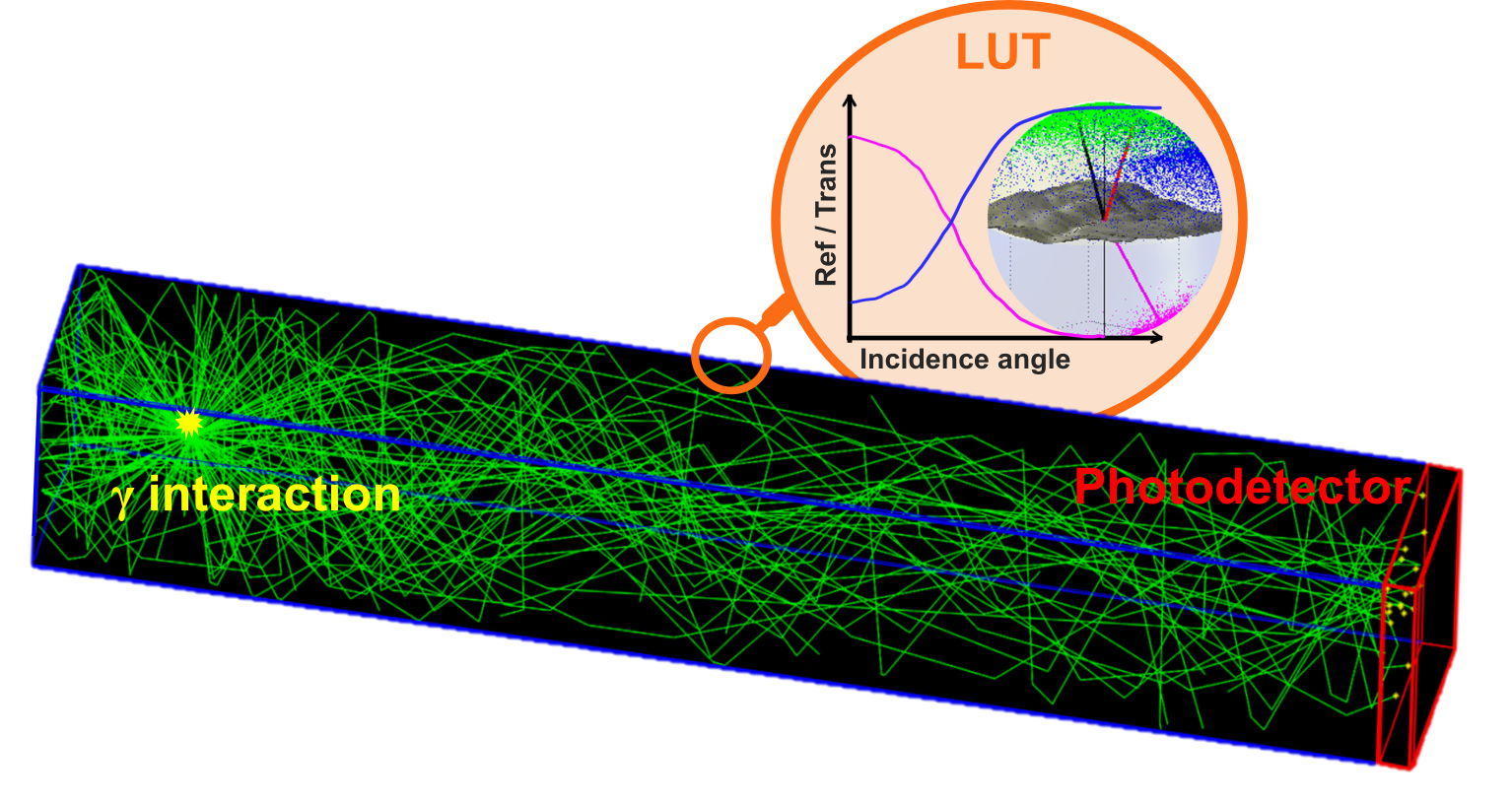
However, carrying out these photographic simulations with the LUT Davis Model requires a lot of computational power. It has to track about 20,000 different photons for every high-energy particle generated, and simulations require at least 5,000 of these fast-moving specks to be accurate.
"If you do the math, 5,000 times 20,000, that goes up quite quickly," Roncali said. "And then each of those 20,000 optical photons will bounce between surfaces maybe 10 times each. It's not sustainable to track all of those photons."
Leveraging the Power of AI
Roncali believes integrating a generative adversarial AI, which she has dubbed optiGAN, into the LUT Davis Model is one key part of reducing the computational strain of simulating images.
"This project is about developing an alternative strategy so that we can generate the same results as before, with the same accuracy, but much quicker," she said.
Generative adversarial AI models are notable for using a generator and a discriminator to create synthetic images. The discriminator scrutinizes the generator's work until it can no longer tell the difference between the AI's synthetic content and the genuine content provided by the researchers.
The optiGAN neural network will be trained on high-fidelity simulations from the LUT Davis Model, thanks to project-lead Carlotta Trigila, a biomedical engineering postdoctoral researcher in Roncali's Lab. Graduate students in the Departments of Electrical and Computer Engineering and Computer Science, are also helping build and integrate the AI into the code for optiGAN.
Once optiGAN is fully trained, the neural network will bear the burden of simulating and tracking the hundreds of thousands of high-energy particles from different emission points in the nuclear imaging model, a task it should be able to accomplish in a few milliseconds.


Lightning in a (Simulated) Bottle
The improvements afforded by the generative AI model will also make it easier to study Cherenkov photons, a type of light generated when gamma photons hit radiation detectors in a nuclear imaging device. These photons have been tough to study due to their scarcity and lightning-fast speed.
"We are interested in those photons because they're extremely fast," Roncali said. To be precise, one occurs in 10 picoseconds — or 10 trillionths of a second.
"This means there is no lag or jitter between the arrival of the gamma photon in the radiation detector and the detection of the first Cherenkov photons. If you can capture them, you can trigger the detector super quickly, and then your detector becomes ultrafast."
This is especially important for time-of-flight positron emission tomography, or TOF PET, a nuclear imaging technique that relies on the time differential between two photons hitting a detector to determine their origin point. The TOF PET scanner then uses this information to create an image and is notable for its promise of superior image quality over traditional PET scanners, particularly for full-body scans.
"The better the detector timing resolution, the better we can calculate time-of-flight and the better the image quality," she said.
Yet, even with a deeper understanding of Cherenkov photons, the issue of producing electronics that can operate at an accelerated pace remains.
Roncali believes implementing optiGAN into GATE will provide critical insights for developing and optimizing ultrafast detectors capable of capturing Cherenkov photons and other high-energy particles. This, in turn, will result in scans with more medical details than ever before, enabling doctors to more easily detect and diagnose diseases.
Opening the GATE
Much like the LUT Davis Model, optiGAN will be fully integrated into GATE — the volunteer-based effort developed and maintained by more than 20 labs around the globe, including Roncali's.
Roncali and other researchers in the collaboration upload their developed tools to GitHub, a widely accessible and community-based website for software developers. Any researcher or community scientist can download GATE and its many resources for free from the website.
The accessibility and collaboration inherent to GATE is crucial to Roncali, who values an open science mindset, particularly with simulation models, as they do not require expensive equipment for experiments, meaning anyone and everyone can use them and contribute to science. Now with optiGAN, which greatly reduces the computational power required to produce medical imaging simulations, the software should be more accessible than ever.
"An open science mindset means we're creating tools for everyone. It's important to empower researchers and students everywhere who want to use simulation."



